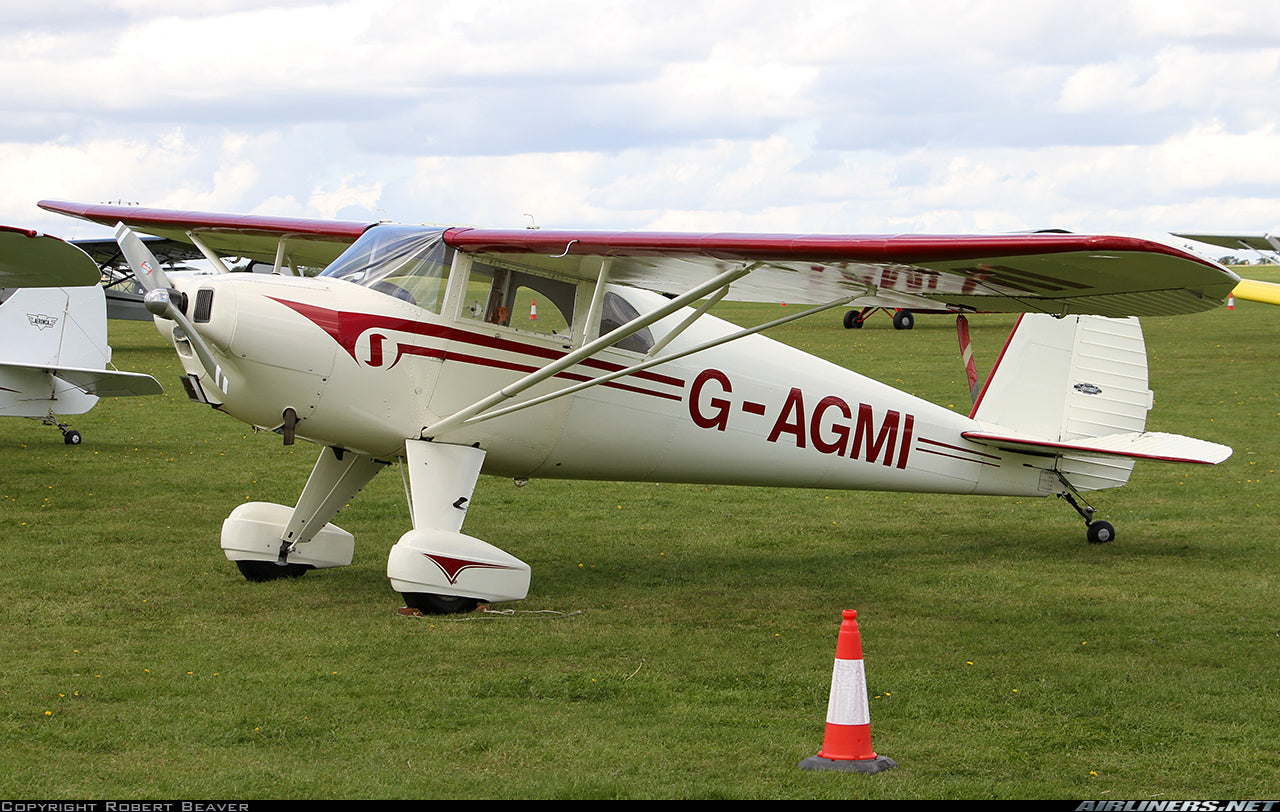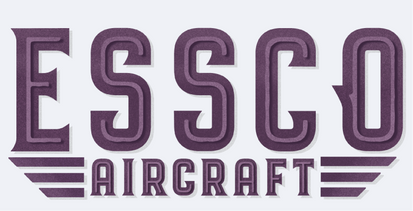
Number 99 of 100 in 100: The Luscombe Model 8 🛩️
Conceptualization:
By the late 1930s, aviation was booming, and interest in personal aircraft had never been higher. Pilots and flight schools alike sought affordable, efficient, and modern aircraft that balanced durability with performance. At the time, most light aircraft were built with fabric-covered wood or steel tube frames, but advancements in aluminum construction and monocoque fuselage design were driving a shift toward all-metal airframes. The Luscombe Model 8 embodied this evolution, initially featuring an all-metal fuselage with fabric-covered wings. After World War II, it fully transitioned to an all-metal airframe, enhancing durability and reducing maintenance demands. With its focus on simplicity, performance, and low operating costs, the Luscombe 8 quickly became a favorite in general aviation, particularly among student pilots and private owners.
Original Design:
The Luscombe 8 distinguished itself from its contemporaries with its all-metal construction, a significant departure from the fabric-covered aircraft that dominated the era. Although pre-war models retained fabric-covered wings, post-war variants transitioned to entirely metal airframes, increasing durability and reducing maintenance needs. Its high-wing configuration provided excellent visibility, making it particularly suited for training and recreational flying.
Another defining characteristic of the Luscombe 8 was its side-by-side seating, which enhanced instructor-student interaction and improved overall flight training efficiency. Unlike many aircraft of its time, which relied on yokes, the Luscombe 8 utilized a control stick, providing pilots with more direct and responsive handling—a feature still appreciated by vintage aircraft enthusiasts today.
The original Model 8A was powered by a 65-horsepower Continental A-65 engine, which, when combined with its lightweight construction, delivered impressive performance and fuel efficiency. Early models also lacked an electrical system, meaning pilots had to hand-prop the engine to start it. This simplicity reinforced fundamental stick-and-rudder flying skills, further cementing the Luscombe 8’s reputation as a reliable training aircraft.

Photo Credit: airliners.net - Dylan Phelps ~ Boneyard Safari
Principal Designer:
Donald A. Luscombe was a visionary in general aviation, always pushing for technological advancement and efficiency in aircraft design. Born in 1895, he initially pursued a career in advertising before shifting his focus to aviation. In 1928, he co-founded the Central States Aero Company, where he played a key role in developing the Monocoupe series—one of the first enclosed-cabin light aircraft, which set a new standard for pilot comfort.
Luscombe founded Luscombe Airplane Development Corporation in 1933, determined to introduce all-metal construction into small aircraft. His early attempt, the Luscombe Phantom, was an advanced design but proved too expensive and challenging to mass-produce, limiting its marketability. Undeterred, he refined his ideas and introduced the Luscombe Model 8 in 1938, a more pilot-friendly aircraft that retained the all-metal monocoque fuselage. His contributions to aviation design continue to influence general aviation aircraft today, particularly in the focus on lightweight, strong, and efficient airframes.
Production Run:
Production of the Luscombe 8 began in 1938 and continued until operations at Luscombe Aircraft Corporation ceased in 1949, during which time 5,743 units were built. The aircraft gained popularity due to its reliable performance, durability, and economical operating costs, making it a strong competitor in the light aircraft market. However, despite its success, Luscombe Aircraft Corporation struggled financially, eventually declaring bankruptcy in 1947.
Following the company’s bankruptcy, Temco produced about 50 additional Silvaires with slight modifications before selling the rights to Silvaire Aircraft Corporation. Silvaire resumed production of the 8F variant from 1956 to 1961, producing approximately 80 additional aircraft. Despite this revival, the market was shifting toward newer aircraft, such as the Cessna 150, which ultimately led to the Luscombe 8's production coming to an end. By the time production of the Model 8 ended, a total of 5,867 units had been built across all variants.
Even though production ceased, the Luscombe 8 remained a favorite among classic aviation enthusiasts. Many of these aircraft are still flying today, a testament to their well-engineered design and ease of maintenance.
Evolution:
Over the years, the Luscombe 8 evolved through multiple refinements, each improving upon the original design. The Model 8A, introduced in 1938, featured a 65-horsepower engine and a 13-gallon fuselage fuel tank. It set the foundation for later variants, which gradually increased power and performance.
The Model 8C upgraded to a 75-horsepower Continental A-75 engine, while the 8E Silvaire Deluxe saw further enhancements, including an 85-horsepower Continental C-85 engine, increased fuel capacity (25 gallons), and the addition of an electrical system—a major convenience upgrade. The final variant, the 8F, was the most powerful, equipped with a 90-horsepower Continental C-90 engine.
A specialized variant, the T8F Observer, featured tandem seating and additional modifications for aerial observation and patrol missions. Each evolution of the Luscombe 8 maintained its signature agility and efficiency, making it a well-rounded aircraft for both training and recreational flying.

Photo Credit: airliners.net - Simon Curtis
Specifications:
Luscombe Model 8-F Specifications
General Characteristics:
- Crew: one
- Capacity: one passenger
- Length: 20 ft 0 in (6.10 m)
- Wingspan: 35 ft 0 in (10.67 m)
- Height: 6 ft 3 in (1.91 m)
- Wing area: 140 sq ft (13 m2)
- Empty weight: 870 lb (395 kg)
- Gross weight: 1,400 lb (635 kg)
- Fuel capacity: 25 US Gallons (95 L)
- Powerplant: 1 × Continental C90 air-cooled flat four, 90 hp (67 kW)
- Propellers: 2-bladed metal fixed pitch, 5 ft 11 in (1.80 m) diameter
Performance:
- Maximum speed: 128 mph (206 km/h, 111 kn)
- Cruise speed: 120 mph (190 km/h, 100 kn)
- Stall speed: 40 mph (64 km/h, 35 kn)
- Range: 500 mi (800 km, 430 nmi)
- Service ceiling: 17,000 ft (5,200 m)
- Rate of climb: 900 ft/min (4.6 m/s)
In Comparison to Other Aircraft in its Class:
When comparing the Luscombe Model 8-F to other aircraft in its class, such as the Piper J-3 Cub and the Aeronca Champ, it becomes clear that the Luscombe 8-F was designed for pilots who wanted a bit more speed, efficiency, and durability. While the J-3 Cub, with its fabric-covered frame and 65-horsepower engine, is beloved for its forgiving handling and low-speed maneuverability, it lags behind in both cruise speed and climb performance. The Luscombe 8-F’s all-metal construction, combined with its 90-horsepower Continental C90 engine, allows it to cruise at 120 mph, significantly faster than the Cub’s cruise speed of around 75 mph. The Aeronca Champ, another competitor, offers similar performance with a more docile flight experience, but it also lacks the rugged, all-metal durability of the Luscombe.
In terms of flight characteristics, the Luscombe 8-F demands more skill than its contemporaries due to its more sensitive controls and conventional tailwheel design. While this makes it a rewarding aircraft for experienced pilots, it does require precise rudder control to avoid ground loops. However, it compensates with a 900 ft/min rate of climb—outperforming both the Cub and the Champ—and a service ceiling of 17,000 feet, making it a solid choice for cross-country flying. Additionally, with a range of 500 miles, the Luscombe 8-F provides pilots with more flexibility for longer trips, whereas the J-3 Cub often requires more frequent fuel stops. For those who appreciate vintage aircraft with spirited handling and efficient performance, the Luscombe 8-F remains a standout choice in the world of classic taildraggers.
Performance:
Luscombe Model 8 Performance Envelope:
V-Speeds:
- V_NE (Never Exceed Speed): 140 mph (122 knots)
- V_NO (Maximum Structural Cruising Speed): 100 mph (87 knots)
- V_A (Maneuvering Speed): 80 mph (70 knots)
- V_S1 (Stall Speed, Clean Configuration): 48 mph (42 knots)
- V_SO (Stall Speed, Landing Configuration): 44 mph (38 knots)
G-Load Limitations:
- Positive G Limit: +3.8
- Negative G Limit: -2.5
Performance Assessment:
The Luscombe Model 8 delivers a performance envelope that strikes a balance between efficiency and excitement, making it a rewarding aircraft for pilots who enjoy hands-on, precision flying. The aircraft is best suited for both leisurely cross-country flying and flight training. While some aircraft in its class include flaps to assist with landing performance, the Luscombe 8 lacks them, meaning pilots must rely on precise airspeed management and sideslip techniques to control descent rates effectively. With stall speeds as low as 44 mph (38 knots) in landing configuration, the Luscombe remains forgiving at low speeds, making short-field operations possible with good technique.
Structurally, the Luscombe 8 is built to handle moderate aerobatic stresses, with G-load limitations of +3.8 and -2.5, giving it a level of robustness not always found in light aircraft of its era. Its conventional landing gear and sensitive rudder response mean that pilots must remain alert, particularly during takeoff and landing, where directional control is crucial. The aircraft's lightweight build, combined with its performance specs, makes it an ideal choice for pilots who appreciate responsive stick-and-rudder flying and enjoy the challenge of mastering a classic taildragger.

Photo Credit: airliners.net - Jim Groom
Safety Record:
The Luscombe 8 has an overall strong safety record, but it does have areas of concern. The most common issues include directional control challenges on landing, susceptibility to ground loops. Some accidents have resulted from improper maintenance, particularly in control cable replacements and landing gear upkeep. However, when flown by experienced pilots and properly maintained, the Luscombe 8 is a safe and reliable aircraft.
Compared to the Piper J-3 Cub, which is known for its docile flight characteristics, the Luscombe 8 requires more precision but rewards pilots with greater efficiency and speed. Its safety concerns primarily stem from handling rather than inherent design flaws, making training and experience key factors in safe operation.
Conclusion:
The Luscombe 8 remains a beloved aircraft among classic aviation enthusiasts. Its durable all-metal design, efficient performance, and rich history make it a standout in the world of vintage aircraft. Though it requires careful handling, those who master it appreciate its agility and rewarding flight characteristics. Whether used for training, leisure, or vintage aircraft showcases, the Luscombe 8 continues to hold its place as a timeless classic in personal aviation.

Photo Credit: airliners.net - Jerome Zbinden
Bibliography:
AOPA Aircraft Fact Sheet – Luscombe 8
Planes of Fame - Luscombe 8A Master 'Silvaire'
Flying Magazine – The Luscombe 8 Offers a Unique Trip Back in Time
Essco Links:
